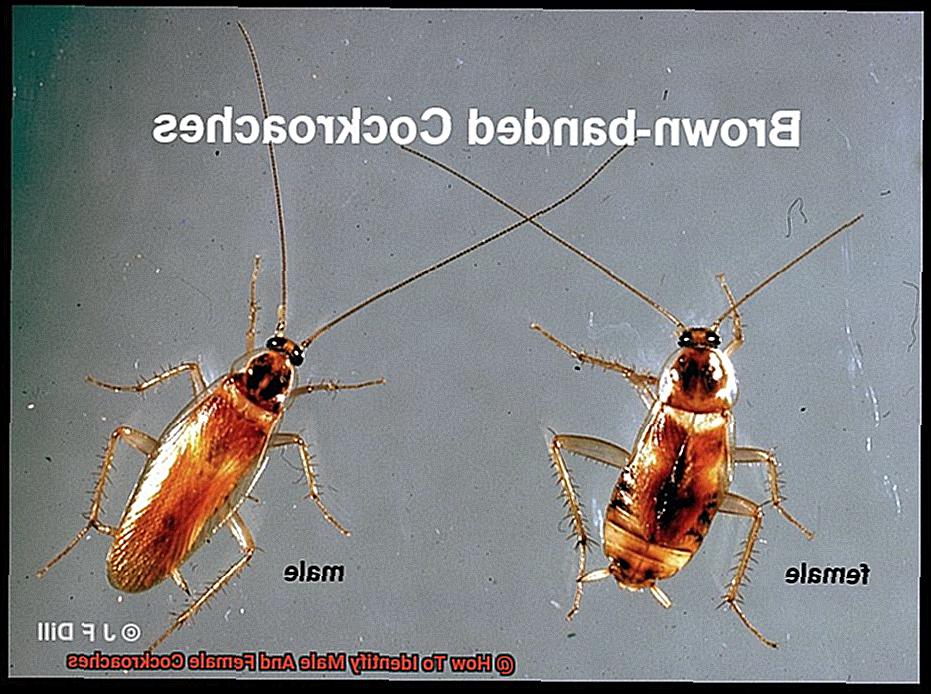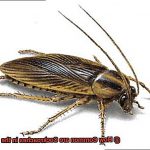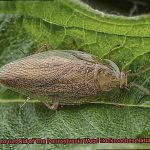Cockroaches – the uninvited guests that make themselves at home in our living spaces. These pesky insects are infamous for their resilience, thriving in almost any environment and spreading with lightning speed. But did you know that telling a male cockroach from a female one can give you an edge in controlling their population?
You might think identifying a roach’s gender is a task best left to entomologists, but it’s not as complicated as it seems. With some basic knowledge and practice, anyone can learn how to do it. In this blog post, we’ll take you through the simple yet crucial steps needed to differentiate between male and female cockroaches.
We’ll also explore the differences in appearance, behavior, and life cycle between male and female roaches. Understanding these distinctions will help you prevent infestations and tackle existing ones effectively.
Whether you’re struggling with a cockroach invasion or just curious about these creepy crawlies, keep reading. We have all the information you need to become an expert at identifying cockroach genders.
Differentiating Male and Female Cockroaches by Size
Contents
- 1 Differentiating Male and Female Cockroaches by Size
- 2 Identifying Male and Female Cockroaches by Antennae Shape
- 3 Distinguishing Male and Female Cockroaches by Abdomen Shape
- 4 Using Reproductive Organs to Tell the Difference Between Males and Females
- 5 Combining Physical Characteristics for Accurate Identification
- 6 Conclusion
When it comes to telling male and female cockroaches apart, size is a major factor to consider. Generally, males are smaller with a more streamlined and slender body, while females tend to be larger and heavier with a broad body that’s designed for carrying eggs. It’s like comparing a sports car to an SUV – males are built for speed, while females are built for endurance.
To better understand the size differences between males and females, you need to look at both length and width. Males typically range from 1/2 inch to 3/4 inch in length, while females can grow up to 1 inch or more. Males tend to have a narrower and elongated shape, while females have a broader and more oval-shaped body.
However, size isn’t the only thing you should look at when identifying the sex of a cockroach. Antennae shape and abdomen shape are also important characteristics to observe. Male cockroaches have longer antennae than females, which are often flattened or paddle-shaped at the tips. Females, on the other hand, have shorter and more slender antennae.
The shape of the abdomen also differs between males and females. Females have a wider and more rounded abdomen compared to males, which have a slimmer and more tapered one. If you’re up for it, you could even examine their reproductive organs. Male cockroaches have visible external genitalia in the form of small bumps on the underside of their abdomen. In contrast, female cockroaches don’t have visible external genitalia but can be identified by the presence of an ovipositor – a tube-like structure at the tip of their abdomen used for laying eggs.
It’s essential to note that size alone isn’t always an accurate way of determining the sex of a cockroach. There may be some overlap in size between males and females of certain species, and environmental factors such as diet and temperature can also affect growth rates. Furthermore, some species display sexual dimorphism, meaning that males and females may have different body shapes or features that go beyond size.
Identifying Male and Female Cockroaches by Antennae Shape
One of the most reliable methods for sexing cockroaches is by examining their antennae under a magnifying glass or microscope. And lucky for us, antennae shape can provide plenty of clues.
When comparing the antennae of male and female cockroaches, it’s like comparing a sleek sports car to a sturdy SUV. Male cockroaches have longer and more slender antennae that are designed for speed and agility. These antennae are also more pronounced and can have a slight curve at the tips, like a sports car’s aerodynamic design. In contrast, females have shorter and thicker antennae that are built for endurance and stability. These antennae are usually straight, like an SUV’s sturdy frame.
But it’s not just about looks – there are also sensory structures called sensilla located on the antennae that can provide additional clues to the sex of the cockroach. Male cockroaches typically have more sensilla on their antennae than females, which may be related to their heightened sensitivity to pheromones.
While antennae shape is a useful tool for sexing cockroaches, it’s not always 100% accurate due to variations within species or populations. Therefore, it’s best to use multiple methods for identification.
Distinguishing Male and Female Cockroaches by Abdomen Shape
Today, we’ll be exploring one of the most important physical characteristics to look for: their abdomen shape.
The abdomen is located at the posterior end of the cockroach’s body and contains their reproductive organs. As you might guess, there are some key differences between male and female cockroaches when it comes to this area.
Female cockroaches have a broader and more rounded abdomen than males. This is because they need plenty of space to carry their eggs, which can number in the hundreds or even thousands depending on the species. As the eggs develop inside the female’s body, they cause her abdomen to take on a more curved shape.
In contrast, male cockroaches have a sleeker and more streamlined appearance, with a narrower and more pointed abdomen that tapers towards the end. Unlike females, male cockroaches don’t require as much space for their reproductive organs since they have external genitalia called styli located at the end of their abdomen. These structures are used to transfer sperm to the female during mating.
While abdomen shape can be a helpful tool for identifying male and female cockroaches, it’s not always foolproof. Some species have similarly shaped abdomens that are relatively flat and elongated in both sexes. In these cases, other physical characteristics such as body size or coloration may be more useful for differentiating males and females.
Using Reproductive Organs to Tell the Difference Between Males and Females
They’re fast, resilient, and can survive almost anywhere – making them a formidable adversary. But did you know that one of the most reliable methods for identifying male and female cockroaches is by examining their reproductive organs?
Male cockroaches have a pair of testes nestled in their abdomen that produce sperm. These sperm are stored in two long, coiled tubes called vasa deferentia until it’s time to mate. During mating, the sperm is released through two small openings on the underside of the abdomen. This process is crucial for reproduction and perpetuating the cockroach population.
Female cockroaches, on the other hand, have a different anatomy. They possess a pair of ovaries responsible for producing the eggs. The eggs then journey through two long, thin tubes called oviducts where they are fertilized by sperm during mating. Once fertilized, the eggs are laid in an egg case known as an ootheca. This egg case serves as a protective sac for the developing cockroach embryos.
Identifying the gender of cockroaches using their reproductive organs requires specialized equipment and expertise. It’s not recommended for inexperienced individuals to attempt this on their own as it can lead to misidentification and potential harm to the insects. However, entomologists and pest control professionals use this method regularly as it is highly accurate.
By understanding whether you have male or female cockroaches in your home, you can better comprehend their behavior and take more effective measures to control their population. Whether you’re a homeowner or a pest control professional, knowing how to differentiate between male and female cockroaches can aid in effective pest management strategies.
Combining Physical Characteristics for Accurate Identification

Well, look no further than their physical characteristics. By combining key traits, you can accurately identify the gender of these pesky insects.
The size and shape of a cockroach’s abdomen is one of the most significant physical characteristics to consider. Females typically have a broader and rounder abdomen than males, as they carry their eggs there. In contrast, males have a slender and streamlined abdomen.

Wings are another physical characteristic to pay attention to. Male and female cockroaches often have different wing lengths and shapes. Males typically have longer wings that extend past their body, while females may have shorter wings that barely reach their abdomen. In some species, the presence or absence of wings can also be used to differentiate between male and female cockroaches. For example, male American cockroaches have fully developed wings, whereas females have vestigial wings or none at all.
If you want to take identification to the next level, examining the genitalia of a cockroach can provide definitive identification of its sex. Although this method requires a microscope or magnifying glass and some knowledge of cockroach anatomy, it is highly accurate. Male and female cockroaches have significantly different genitalia, making this method reliable but more challenging for beginners.
By combining these physical characteristics, anyone can learn how to identify male and female cockroaches like a pro. Knowing the sex of a cockroach can provide valuable information about their behavior and reproductive habits, making it easier to control them effectively.
xnt8ndiQJIg” >
Conclusion
In conclusion, identifying male and female cockroaches is an essential step in effective pest control. While it may seem like a task reserved for entomologists, anyone can learn how to do it with some basic knowledge and practice. Differentiating between male and female cockroaches involves observing their size, antennae shape, abdomen shape, and reproductive organs. By combining these physical characteristics, homeowners and pest control professionals can accurately identify the gender of cockroaches and take appropriate measures to control their population.
Size plays a significant role in distinguishing male and female cockroaches. Males tend to be smaller with a more streamlined body, while females are typically larger and heavier with a broad body designed for carrying eggs. Antennae shape is another useful tool for sexing cockroaches. Male cockroaches have longer and more slender antennae than females, which are often flattened or paddle-shaped at the tips.
Abdomen shape is also an important characteristic to observe when identifying male and female cockroaches. Females have a broader and more rounded abdomen than males because they need plenty of space to carry their eggs. In contrast, males have a narrower and more pointed abdomen with external genitalia called styli.
While examining the reproductive organs of cockroaches provides definitive identification of their sex, it requires specialized equipment and expertise. However, understanding how to identify male and female cockroaches using these physical characteristics helps homeowners better assess the size and makeup of their infestation. Armed with this information, they can take appropriate measures to control it.






